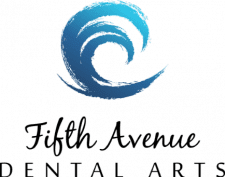Do you need endodontic treatment on a broken, dying, or abscessed tooth? Our dentist in downtown San Diego hears a lot of questions about root canal treatment each day. We’re here to assure you that getting a root canal is just as “routine” as having a crown or filling placed in your tooth. Here are a few things you’ll probably want to know:
Do I Need a Root Canal If The Tooth Does Not Hurt?
If your tooth is dying or abscessed, yes. Otherwise, the deteriorating nerve tissues will cause infection to spread into your face, adjacent teeth, and—in rare circumstances—even your brain. Since the tooth is non-vital, it may not be able to perceive pain the way a healthy tooth does.
Does it Hurt to Get a Root Canal?
Root canal treatment is gentler than ever, thanks to effective numbing medications and state-of-the-art equipment. You shouldn’t feel anything more than a bit of pressure. Remember, getting a root canal helps address any sources of discomfort rather than cause additional pain. However, a severely infected tooth may be difficult to get numb. If that’s the case, we may need to prescribe an antibiotic a few days before your endodontic appointment.
How Long is the Recovery After a Root Canal?
It can take a few hours for your local anesthetic numbing medication to wear off. If your jaw is a little sore from keeping your mouth open, or there’s sensitivity where the anesthetic was injected, we recommend taking ibuprofen or applying a cool compress to the side of your face. Most of these minor symptoms only last a day or so, similar to what you would expect if you’re getting other types of dental work.
How Many Root Canals Can You Have?
Every tooth has a major pulp chamber and then a canal down the tip of each root. Some teeth have one root, others have two or three. It’s also possible to have accessory canals in addition to the main root nerves. You’ll only need one root canal, but all of the root chambers will need to be cleaned and sealed off.
What Should You Not Do After a Root Canal?
One of the reasons why root canals are nothing to fear is because your “recovery” is simple. The source of discomfort and infection is removed, so you can go about your daily activities as normal. The only thing we ask is that you avoid chewing on that side of your mouth until your permanent dental crown is installed (about two weeks later.)
How Do I Know If I Need A Root Canal?
We will need to take an X-ray of your tooth to assess the root and area around it. If there are symptoms of abscesses or cracked roots, you might also be experiencing pain when you bite down or hypersensitivity to hot temperatures. It’s also common for there to be a small, pimple-like fistula on the gums next to your tooth.
Are There Alternatives to Root Canal Treatment?
Unfortunately, no. Once the nerve of a tooth is compromised, any other restoration will only trap infection inside of your tooth. The entire nerve canal needs to be cleaned out to prevent recurring infections. Your only other option is to have the tooth extracted, but at that point, you would need additional treatment such as a bridge or dental implant.
Do I Need a Crown After My Root Canal?
Yes. Since your tooth is no longer alive, it’s more brittle and prone to wear. A crown will allow you to bite and chew normally without the added risk of your tooth fracturing. Plus, it will address any aesthetic issues caused by natural darkening or fractures in your damaged tooth.
Root Canal Dentist in Downtown San Diego
If you’re in pain or have an abscessed tooth, call Fifth Avenue Dental Arts. Understanding why root canals are nothing to fear will help you keep your smile healthy and limit the spread of infection to other teeth in your smile. Contact us now to request an exam.






